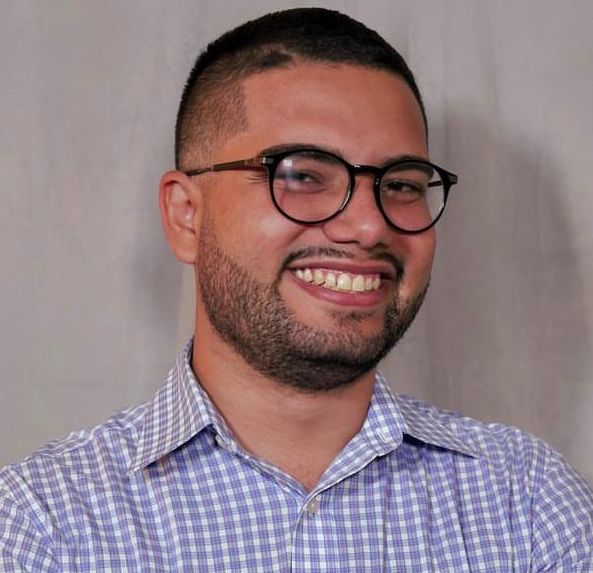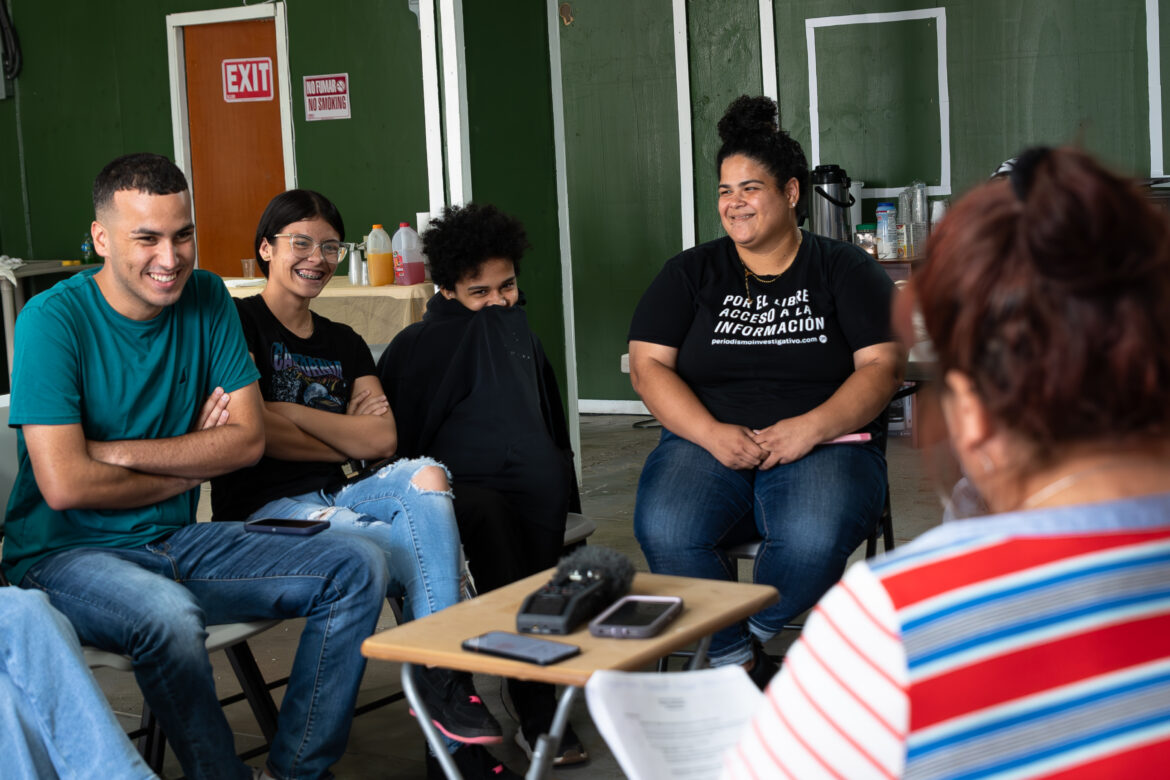With bomba music playing and a photo exhibition, 20 youngsters from the southern regions towns of Arroyo, Patillas, Guayama, Salinas and Santa Isabel celebrated the closing of the second edition of Medioscopio, the media literacy and development project for citizen reporters promoted by the Center for Investigative Journalism (CPI, in Spanish).
The closing activity — held at the Casa Comunitaria de Medios in Salinas — served as an exhibition space for the final projects of the young participants. Through the presentation of images of the Aguirre community, descriptive texts, a podcast and a video news story, event guests were able to appreciate the evolution of the work of the participants. The Bomba Cunyabe group entertained with the interpretation of seven songs that got the young people dancing.
Through Medioscopio, the participating youth were trained on how to critically consume information and produce their own stories, and those of their communities, during 11 Saturdays at the headquarters of the Iniciativa de Ecodesarrollo de la Bahía de Jobos (IDEBAJO), in Aguirre. They learned about citizen journalism, access to public information, environmental racism, non-sexist content creation, photography, and diction, among other skills. As a result of the educational experience, the participants identified topics of interest to them and developed four citizen journalism initiatives.
The unwanted neighbor in Aguirre
This project focuses on the pollution produced by the Aguirre Thermoelectric Power Plant and how it affects the health of the residents of the communities surrounding the facility. The participants created a page on Instagram to inform about this topic through the narrative of the photo essay, and they already have seven posts on the social network.
“El vecino indeseado de Aguirre” (The Undesirable Neighbor in Aguirre) is an initiative developed by young people from Salinas who hope to maintain the environment for the service of their people and for the long term. “It would be great if it later became a project in which the community itself could organize around and see journalism as a way to talk about what people are feeling; and perhaps, at some point, to be able to speak to the government about the damage that the thermoelectric plant is causing in this community,” said Coralis Cruz González, 28, and co-creator of “El vecino indeseado de Aguirre.”
Santa Isabel on fire
In 2022, 125 wildfires were registered in Santa Isabel. This project seeks to educate the neighbors on how to mitigate any situation that could cause a forest fire in the area. In addition, through an Instagram page, they want to promote that citizens alert the authorities and other members of their community about possible fires.
According to 16-year-old twins Iranis and Alanis Espada Santiago, “Santa Isabel en llamas” (Santa Isabel on Fire) emerges from their desire to create a medium focused on the environment. “There are many forest fires In Santa Isabel. We’re interested in informing the community about the fires, educating them about how they happen and how they affect us,” said Alanis, who lives in that town.
The waterfront area has dried up
The project features a series of interviews with fishermen from Arroyo, who comment on how the waterfront area has dried up, something that threatens their fishing trade and livelihood. The video also shows images that show the change on that coastline.
According to Gloriemar Ruiz Morales, both she and her peers who participate in Medioscopio grew up in this area of the waterfront in the Marina de Arroyo sector. So, the video report “Se seca el malecón” (The Drying Pier) responds to her interest in understanding why this area, so important for the development of their families and community, is drying up. Ultimately, the project’s aspiration is to promote that “people our age can join us and create more initiatives in Arroyo,” said Ruiz Morales, 16.
Young people favor solar energy
In this podcast about the energy crisis that Puerto Rico is experiencing, the participants discuss renewable energy alternatives and the importance of placing solar panels in areas that do not affect fertile soils for agriculture in the communities.
“We want the project to reach more people our age who can gain awareness of the issues we are presenting,” said Damileiry de Jesús Torres, 16, co-creator of “Jóvenes por el sol” (Youth for the Sun). “Communally we hope to take the project to our town of Santa Isabel and that — perhaps — something can be done beyond just communicating it,” she added.
The learning acquired in recent weeks also motivated the participants to want to get out of their comfort zone and recognize their potential to serve the community. “[The Medioscopio experience] taught us that we can carry out investigations and that we have the capacity to do journalism without fear,” said participant Cruz González.
According to the manager of the CPI’s Journalism Training Institute, Víctor Rodríguez, Medioscopio is an important initiative for the CPI since it allows “providing [communities] with the tools so that they can develop their own narratives and that they can be inserted in conversations about the situations that are directly affecting them.”
For his part, Roberto Thomas, coordinator of IDEBAJO, said he was happy that the young participants decided — on their own initiative — to create projects aimed at addressing environmental problems that affect their communities in the South. “The aspiration is that this group remains interested in the subject and understands that this [IDEBAJO] is a space where they can take advantage of and bring ideas so that we can build together,” he said.
Carla Minet, executive director of the CPI, assured that initiatives, such as Medioscopio, are important since “it allows our journalists to come to communities in a consistent way and have contact with young people, listen to their problems, their concerns, their proposals, and understand how they get informed. So, for us, it’s a learning experience.” In the long term, the CPI aspires to take the Medioscopio initiative to other sectors of Puerto Rico to continue to educate and empower the most vulnerable communities.
The initiative was made possible with the support of the Fundación Ángel Ramos and Report for America.




